This pumpkin brioche is my autumn love: soft, aromatic, with a light caramel hint and a glossy crust. Classic French brioche is an enriched dough with a generous amount of butter and eggs. I add roasted pumpkin purée to it. It brings natural sweetness, a cozy fall flavor, and a beautiful warm color.
This recipe is all about comfort and simplicity. Mixer or by hand – both work perfectly if you follow the instructions. The dough mixes easily, loves an overnight chill (so you can start a cozy morning with fresh baking!), and you can play with the shape: a plush loaf for toast or individual breakfast rolls. One key detail – the purée must be truly “dry,” without excess liquid. That way the brioche holds its shape and the crumb turns out tender and springy.
Why you’ll love this recipe:
- reliable results and a straightforward process;
- natural flavor and vivid color thanks to roasted pumpkin;
- versatility: from a sweet breakfast with butter and honey to sandwiches with cheese and ham.
Ready? Below you’ll find the ingredients, pro tips, and a step-by-step method to help your pumpkin brioche come out perfectly on the first try.
Pumpkin Brioche – Ingredient Notes & Method Overview
About the Ingredients
- Strong flour: Gives structure and that soft, springy crumb brioche is famous for. Strong flour handles the high fat and egg content without collapsing.
- Eggs & yolks: Enrich the dough, deepen color, and add a custardy tenderness. We use a mix of whole egg and extra yolks for a golden, feathery crumb.
- Roasted pumpkin purée: Adds natural sweetness, autumn flavor, and a warm hue. Use a “dry” purée (roasted, not boiled). If your purée is watery, cook it briefly in a dry pan to evaporate excess moisture.
- Butter (82.5%): Brings silky richness and a fine, shreddable crumb. Add it after gluten develops, in small portions, to keep the dough strong.
- Sugar: Helps browning, tenderness, and subtle sweetness without making the loaf cake-like.
- Salt: Balances sweetness and rounds out flavor.
- Yeast: We use fresh (or instant). Proper fermentation gives lightness and aroma without yeasty notes.
Pro tip: Keep ingredients cool (even the flour). A cool mix makes the dough easier to handle and improves structure.
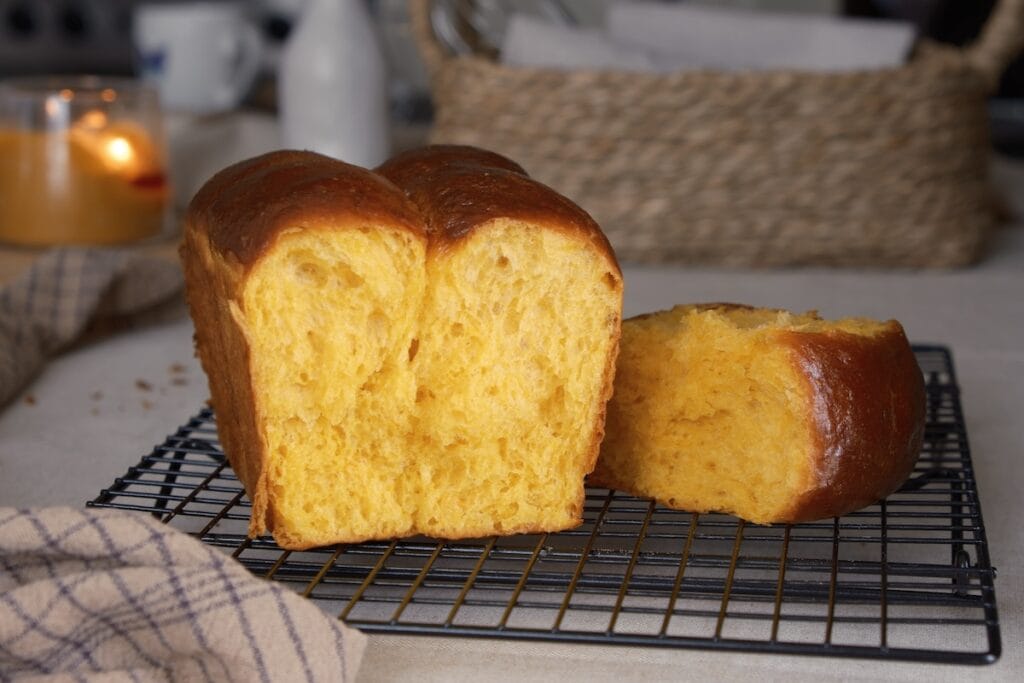
How to make dry pumpkin purée
- Peel the pumpkin from the skin.
- Cut it in half lengthwise.
- Peel out the seeds (life hack: it’s convenient to do this with an ice cream scoop).
- Cut the pumpkin into pieces.
- Grease a baking sheet or dish with oil and bake the pumpkin pieces in the oven until soft.
- Mash the ready-made soft pumpkin with a potato masher or punch it with a blender (it will be more homogeneous).
How long to cook a pumpkin for puree? It depends on pumpkin, you just need to check and wait until it is soft and easy to mash.
How to store pumpkin puree? Store in a tight container in the refrigerator for several days or in the freezer for up to 2 months.
How to freeze pumpkin puree? Yes, pumpkin puree can be frozen, which is very convenient. I make it into cubes in an ice cube tray, then put them in a freezer bag and use it when needed, it’s so convenient to weigh out the right amount.
Brioche Cooking Method Overview
1) Hydrate & start gluten: Mix flour with egg, yolks, and pumpkin purée just until the flour is moistened. Short rest helps the dough hydrate evenly.
2) Build strength: Add salt, sugar, and yeast; mix until the dough becomes elastic and starts to clean the bowl. Check dough temperature – keep it around 24°C or less.
3) Enrich gradually: Add butter in small portions, waiting for each to fully disappear before the next. Mix to a smooth, stretchy dough that passes a light windowpane.
4) First rise: Let the dough rise until noticeably bulkier.
5) Cold fermentation (recommended): Chill 8-24 hours. This deepens flavor and makes shaping effortless the next day.
6) Shape & proof: Shape into a loaf or rolls and proof warm until the dough looks airy and softly domed.
7) Bake & finish: Brush with egg wash for shine; bake until golden and set. For a glossy finish, brush with thin syrup or melted butter right out of the oven.
Don’t stress the timings – look at the dough, not the clock. Temperature, flour strength, and purée moisture all affect how quickly it rises.
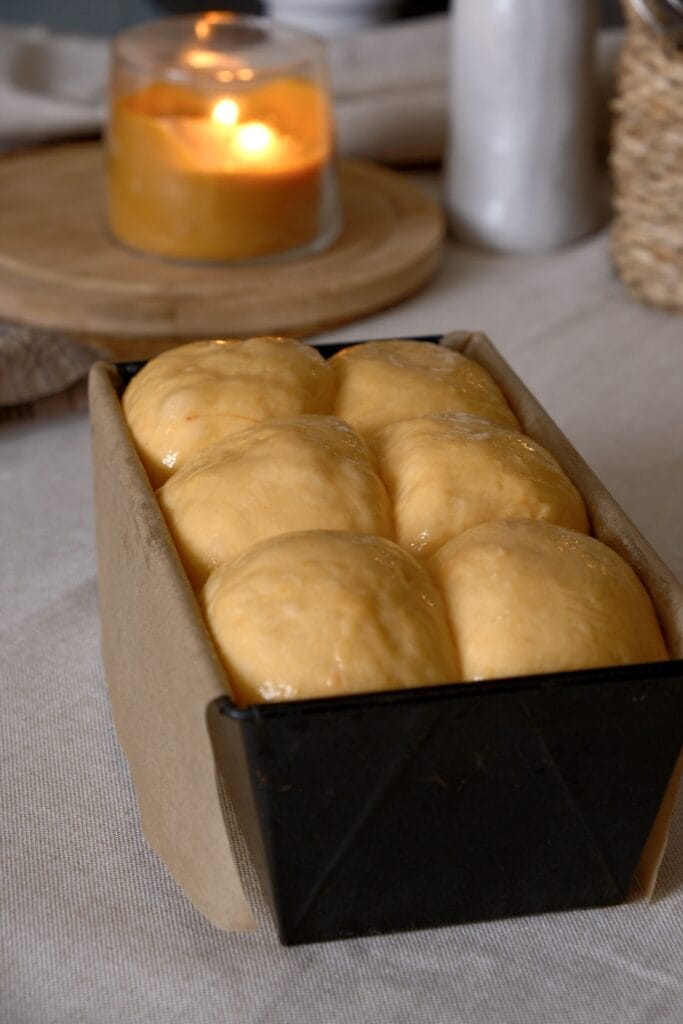
Troubleshooting & Pro Tips
Dough feels stiff: Your purée is likely very dry. Knead in 1-2 tsp milk or a touch more purée at the end.
Dough is sticky/soft: Hold back a spoonful of purée next time, or dust in 1-2 tsp flour at the end of mixing.
Browns too fast: Lower the oven by 5-10°C or tent with foil for the last minutes.
Tearing during shaping: Dough is under-kneaded or too cold. Give it a short bench rest and a brief mix to restore elasticity.
Serving & Storage
- Serve: Sliced and lightly toasted with butter and honey; wonderful for French toast, breakfast sandwiches with cheese/ham, or slathered with pumpkin spice butter.
- Store: Airtight at room temperature 2-3 days.
- Freeze: Up to 2 months (whole or sliced). Thaw at room temperature; refresh in a warm oven for a few minutes.
FAQ:
Q: Can I use canned pumpkin?
A: Yes. Drain it well or cook it briefly in a dry pan to remove excess moisture. Aim for a thick, spoonable purée.
Q: Do I have to chill the dough overnight?
A: Not mandatory, but highly recommended. Cold retard improves flavor and makes shaping easier.
Q: Fresh vs instant yeast?
A: Use 10 g fresh or ~4 g instant. Keep the dough around 24°C for best rise and structure.
Q: Why add butter at the end?
A: Adding butter after gluten develops keeps the dough strong and the crumb fine and silky.
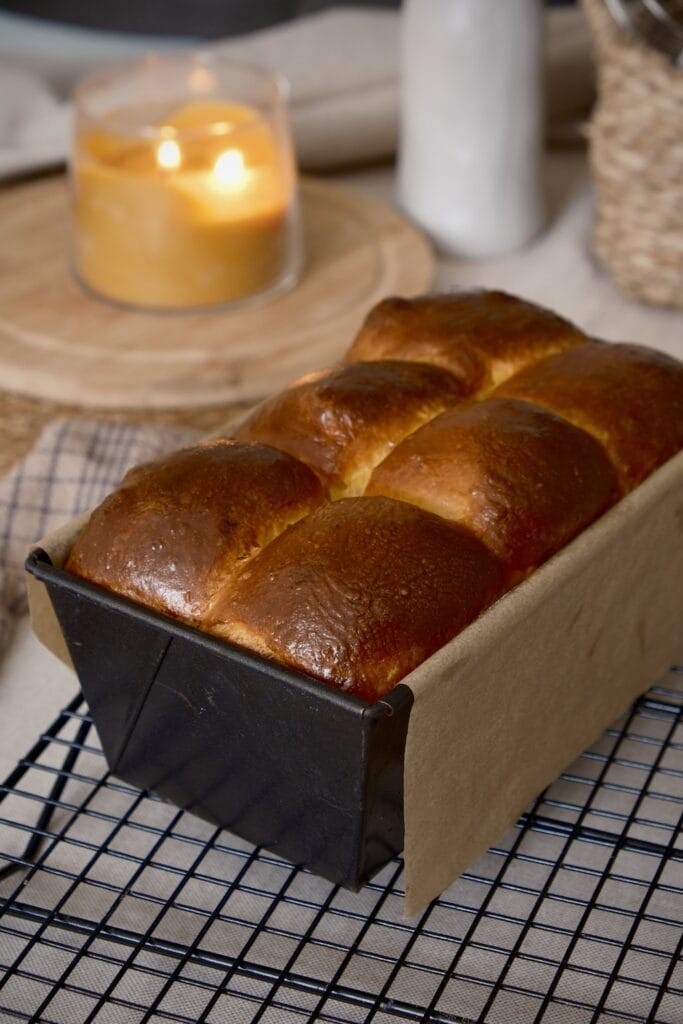
If you try this recipe, share your impressions or fun tweaks in the comments below. Your feedback helps me create even more delicious recipes!
Pumpkin Brioche | Yellowmixer.com Baking Blog
Print RecipeIngredients
- 245 g strong flour
- 10 g fresh yeast (≈ 4 g instant)
- 6 g salt
- 35 g sugar
- 75 g roasted pumpkin purée
- 50 g whole egg (1 pc)
- 60 g egg yolks (3 pcs)
- 100 g unsalted butter (82.5% fat)
Instructions
Stand Mixer (dough hook). Combine: In the bowl, add flour, whole egg, yolks, and pumpkin purée. Mix on low 2–3 min until flour is moistened.
Develop gluten: Add salt, sugar, and yeast. Mix on medium 4–6 min until dough becomes elastic and starts to clean the bowl. Target dough temp ~24°C (75°F). If it warms, pause 5 min or briefly chill the bowl.
Add butter: Incorporate butter in 4–5 additions (20–25 g each), waiting until fully absorbed before the next. Mix 6–10 min more to a smooth, stretchy dough that passes a light windowpane and cleans the bowl.
First rise: Shape into a ball, place in a lightly oiled bowl, cover, and rest 40–60 min at room temp until slightly puffy.
Cold fermentation (recommended): Chill 8–24 h at ~5°C (41°F).
Shape: For a loaf, press into a rectangle and divide into 6 pieces (~90 g); round and place into a greased ~20×11×10 cm pan. (Or make 8–10 rolls.)
Proof: Cover and proof 1.5–2.5 h at 26–28°C (79–82°F) until doubled. Finger dent should spring back slowly.
Bake: Brush with egg wash (1 egg + 1 Tbsp milk + pinch salt). Bake 175–180°C (347–356°F): loaf 25–30 min, rolls 15–18 min. Tent with foil if browning too fast. Internal temp 92–94°C (198–201°F).
Finish: Cool on a rack ≥1 h.
By Hand (no mixer). Autolyse: In a bowl, whisk whole egg + yolks with pumpkin purée. Add flour and mix until all flour is moistened. Cover 30 min.
Additives: Sprinkle in salt, sugar, and yeast; mix until uniform. Cover 30 min.
Strengthen: With damp hands, do stretch-and-fold: lift an edge, fold to center; rotate bowl and repeat 8–10 times. Cover 30 min.
Repeat: Do one more round of stretch-and-fold.
Butter in: Add butter in small pieces, rubbing and folding until each portion disappears before adding the next. If sticky, rest 5–10 min and continue. Dough should become smooth and elastic.
First rise: Ball the dough, place in a lightly oiled bowl, cover 40–60 min at room temp.
Cold fermentation (recommended): Chill 8–24 h at ~5°C (41°F).
Shape, proof, bake, finish: Proceed as in Steps 6–9 of the mixer method.
Notes
Dough temperature: Aim for ~24°C after mixing. Keep ingredients cool (you can chill flour and bowl). Consistency check: If dough feels stiff, knead in 1–2 tsp milk/pumpkin purée at the end. If too sticky, dust in 1–2 tsp flour.

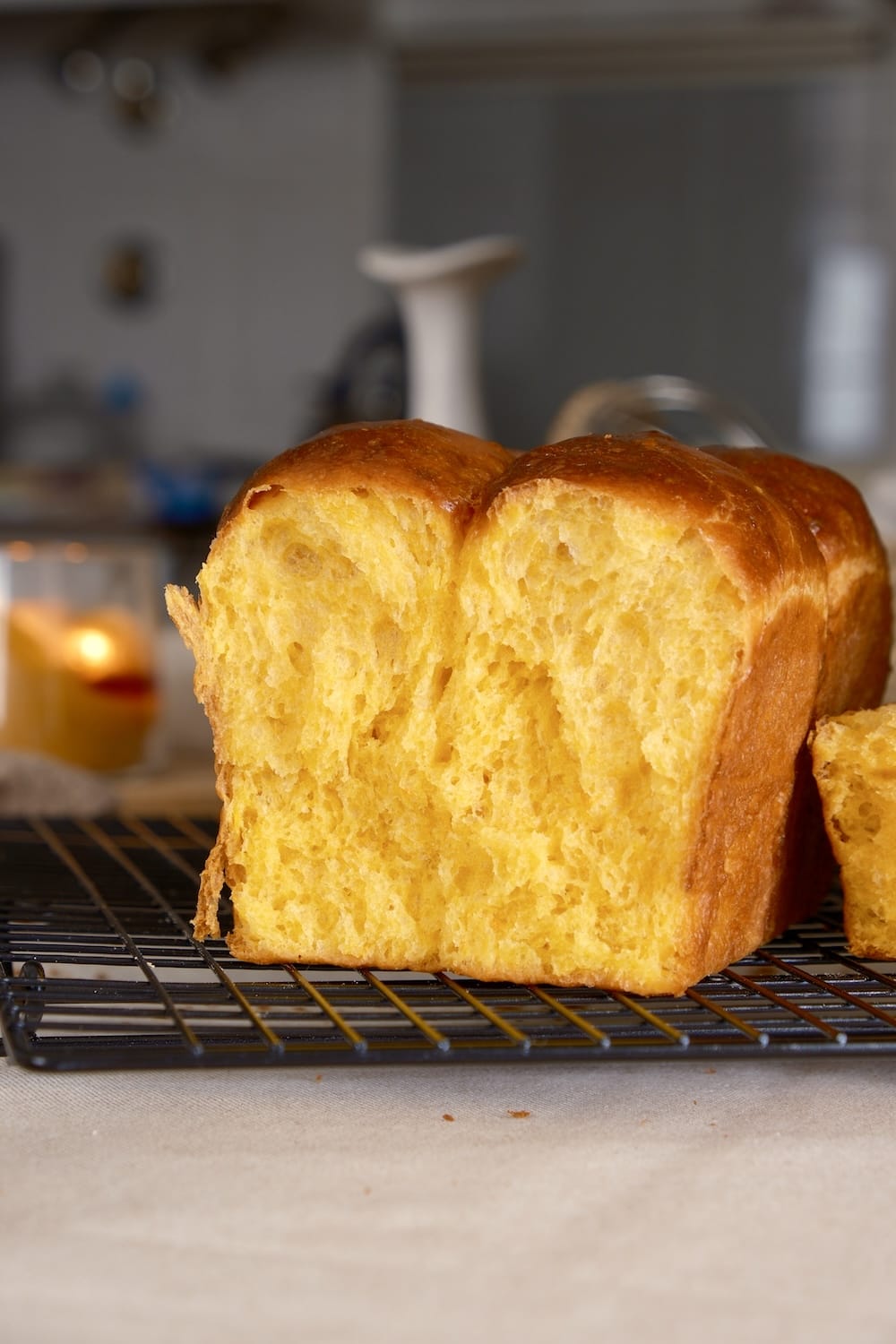


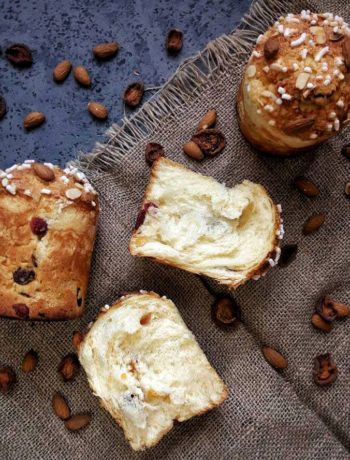
Be the first to comment